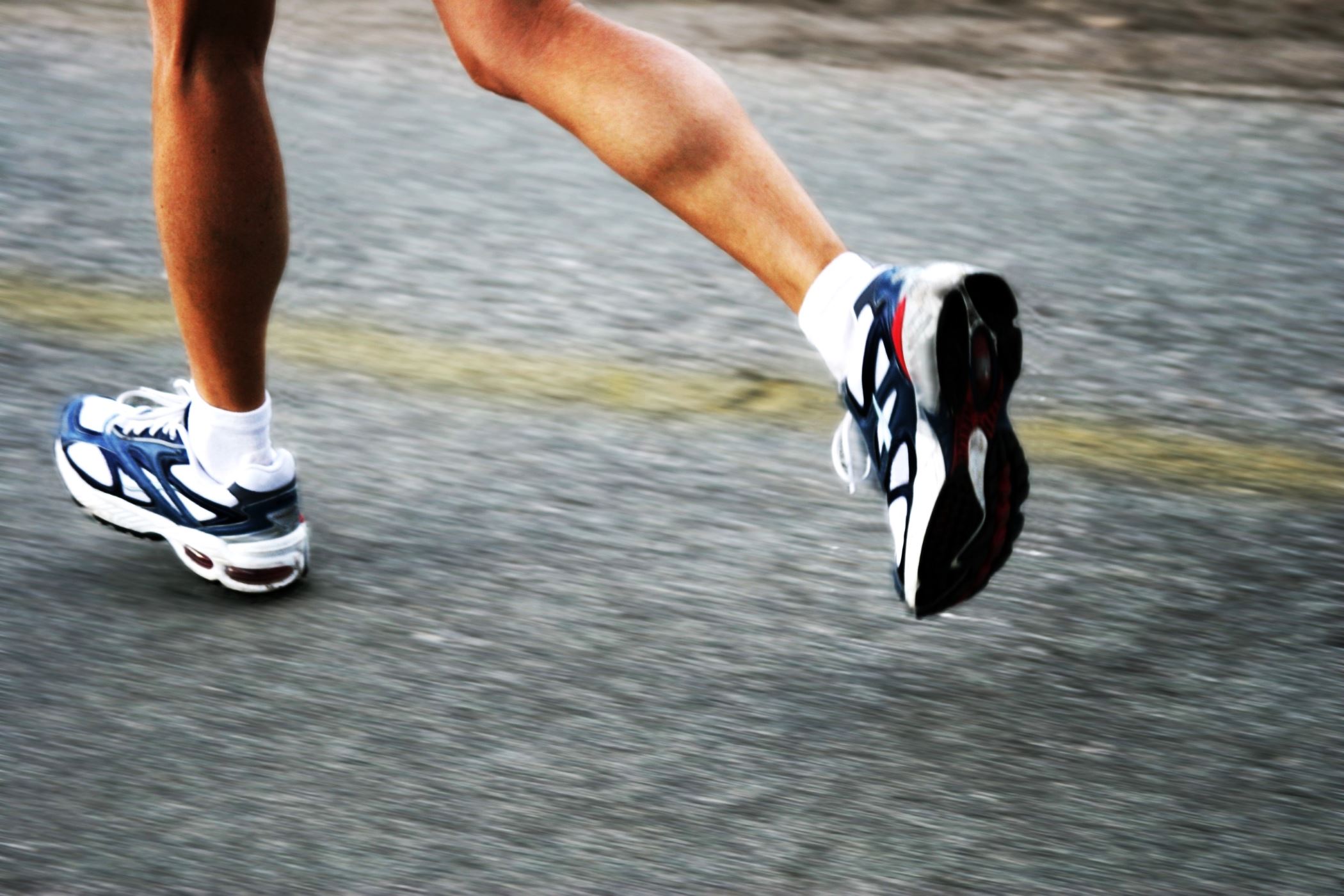Home>Health & Nutrition>Injury Prevention>Maintaining Running Fitness During Injury


Injury Prevention
Maintaining Running Fitness During Injury
Published: February 24, 2024
Learn how to prevent injuries and maintain your running fitness during injury with our expert tips and advice. Keep your training on track with our injury prevention strategies.
(Many of the links in this article redirect to a specific reviewed product. Your purchase of these products through affiliate links helps to generate commission for Therunningadvisor.com, at no extra cost. Learn more)
Table of Contents
Importance of Maintaining Fitness During Injury
Sustaining an injury can be a frustrating setback for runners, disrupting their training routine and potentially jeopardizing their hard-earned fitness gains. However, it's crucial to recognize the significance of maintaining overall fitness during the recovery period. Engaging in appropriate exercises and activities can not only prevent detraining but also aid in the rehabilitation process.
When an injury forces a runner to take a break from their regular training regimen, the body begins to lose the cardiovascular and muscular endurance that has been diligently built over time. This detraining effect can lead to a decline in fitness levels, making it more challenging to resume running at the same intensity and duration once the injury has healed. By incorporating alternative low-impact exercises and cross-training activities, runners can mitigate the loss of fitness and preserve their hard-earned conditioning.
Moreover, maintaining fitness during an injury can have a positive impact on mental well-being. Running is not only a physical activity but also a source of stress relief and mental clarity for many individuals. When sidelined by an injury, the absence of this outlet can lead to feelings of frustration and restlessness. By engaging in suitable exercises and activities, runners can continue to experience the mental benefits of physical exertion, which can contribute to a more positive mindset during the recovery process.
Furthermore, staying active during an injury can aid in the prevention of muscle atrophy and joint stiffness. Low-impact exercises and cross-training activities help to sustain muscle strength and flexibility, which is essential for a smoother transition back to running once the injury has healed. Additionally, maintaining overall fitness can expedite the recovery process by promoting blood circulation and enhancing the body's natural healing mechanisms.
In essence, the importance of maintaining fitness during injury cannot be overstated. By incorporating suitable exercises, cross-training activities, and maintaining a positive mindset, runners can minimize the impact of detraining, preserve their physical conditioning, and facilitate a smoother transition back to running once they have fully recovered.
Read more: Causes Of Hand Swelling During Running
Types of Low-Impact Exercises for Injured Runners
When faced with an injury that impedes regular running activities, it's essential for runners to explore alternative low-impact exercises that can help maintain their fitness levels and aid in the recovery process. Low-impact exercises are gentle on the joints and muscles, making them suitable for individuals recuperating from injuries. Here are several types of low-impact exercises that injured runners can incorporate into their fitness routine:
1. Swimming
Swimming is a highly effective low-impact exercise that engages the entire body. It provides a cardiovascular workout while placing minimal stress on the joints. The buoyancy of water reduces the impact on muscles and joints, making it an ideal choice for injured runners seeking to maintain their cardiovascular fitness and muscular endurance.
2. Cycling
Cycling is another excellent low-impact exercise that allows injured runners to sustain their cardiovascular fitness. Whether on a stationary bike or outdoors, cycling provides a non-weight bearing workout that is gentle on the joints while still engaging the leg muscles. It also offers the opportunity to vary intensity and duration, enabling runners to tailor their workouts to their current fitness level and injury status.
3. Elliptical Training
Utilizing an elliptical trainer provides a low-impact, full-body workout that simulates the motion of running without the repetitive impact on the joints. This makes it an effective alternative for maintaining cardiovascular fitness and lower body strength while minimizing stress on the injured areas.
4. Water Aerobics
Water aerobics classes offer a low-impact workout in a supportive aquatic environment. The resistance provided by the water enhances muscle engagement while reducing the risk of strain or injury. Water aerobics can be particularly beneficial for individuals recovering from lower body injuries, providing a comprehensive workout without placing undue stress on the affected areas.
5. Yoga and Pilates
Yoga and Pilates focus on improving flexibility, core strength, and balance, making them valuable additions to an injured runner's fitness routine. These low-impact activities help maintain overall body conditioning, enhance muscle flexibility, and promote mental relaxation, which can be particularly beneficial during the recovery period.
Incorporating these low-impact exercises into their fitness regimen can enable injured runners to sustain their cardiovascular fitness, muscular strength, and overall conditioning while minimizing the risk of exacerbating their injuries. By diversifying their workout routine with these alternatives, runners can stay active and engaged in their fitness journey, even during periods of injury.
Tips for Cross-Training to Maintain Running Fitness
Cross-training is a valuable strategy for injured runners to sustain their overall fitness and mitigate the impact of detraining. By incorporating diverse activities into their training regimen, runners can maintain cardiovascular endurance, muscular strength, and mental resilience while allowing their injuries to heal. Here are some effective tips for cross-training to maintain running fitness during the recovery period:
-
Diversify Your Activities: Engage in a variety of low-impact exercises and cross-training activities to target different muscle groups and energy systems. This not only helps prevent overuse injuries but also ensures a well-rounded approach to maintaining overall fitness.
-
Set Clear Goals: Establish specific cross-training objectives to maintain motivation and focus. Whether it's improving endurance, enhancing flexibility, or building strength, having clear goals can provide a sense of purpose and direction during the recovery phase.
-
Modify Intensity and Duration: Tailor the intensity and duration of cross-training activities to align with your current fitness level and injury status. Gradually increase the intensity as your body adapts, but always prioritize safety and listen to your body's signals.
-
Incorporate Strength Training: Utilize strength training exercises to target muscle groups that may be underutilized during running. Focus on exercises that enhance core stability, improve muscular balance, and promote overall strength to complement your running performance.
-
Maintain Consistency: Establish a regular cross-training schedule to maintain momentum and consistency in your fitness routine. Consistent engagement in cross-training activities can help prevent detraining and facilitate a smoother transition back to running once you have fully recovered.
-
Monitor Progress: Keep track of your cross-training activities and monitor your progress over time. This can provide valuable insights into your fitness improvements, help identify areas for further development, and serve as a source of motivation as you witness your continued progress.
-
Listen to Your Body: Pay close attention to any discomfort or pain during cross-training activities. It's essential to differentiate between the normal exertion of exercise and potential signs of aggravating your injury. Always prioritize your body's well-being and adjust your activities accordingly.
-
Seek Professional Guidance: Consult with a physical therapist or fitness professional to develop a tailored cross-training plan that aligns with your injury rehabilitation needs and long-term running goals. Their expertise can provide valuable insights and ensure that your cross-training activities support your recovery effectively.
By implementing these tips for cross-training, injured runners can effectively maintain their running fitness, minimize the impact of detraining, and support their overall rehabilitation process. Cross-training not only aids in preserving physical conditioning but also contributes to mental resilience, ensuring that runners remain engaged and motivated throughout their recovery journey.
Nutrition and Recovery Strategies for Injured Runners
Proper nutrition and effective recovery strategies play a pivotal role in the rehabilitation process for injured runners. When sidelined by an injury, it's essential to prioritize dietary choices and recovery techniques that support the body's healing and maintenance of overall fitness. Here are comprehensive strategies to optimize nutrition and recovery during the injury period:
Adequate Protein Intake
Incorporating sufficient protein into the diet is crucial for injured runners. Protein plays a fundamental role in tissue repair and muscle recovery, essential components for healing from injuries. Including lean sources of protein such as poultry, fish, legumes, and dairy products can aid in maintaining muscle mass and promoting the repair of damaged tissues.
Anti-Inflammatory Foods
Injuries often lead to inflammation in the affected areas. Consuming a diet rich in anti-inflammatory foods can help mitigate this response and support the body's healing process. Incorporating foods such as fatty fish, leafy greens, berries, and nuts, which are abundant in omega-3 fatty acids and antioxidants, can assist in reducing inflammation and promoting recovery.
Hydration and Nutrient-Rich Foods
Proper hydration is vital for overall health and recovery. Injured runners should prioritize adequate water intake to support the body's natural healing mechanisms and maintain optimal physiological function. Additionally, consuming nutrient-dense foods such as fruits, vegetables, whole grains, and healthy fats can provide essential vitamins, minerals, and antioxidants that facilitate the recovery process.
Rest and Sleep
Ensuring adequate rest and quality sleep is paramount for injured runners. The body's repair and recovery processes are significantly influenced by sleep, making it essential for promoting healing and overall well-being. Prioritizing sufficient rest and establishing a consistent sleep schedule can aid in the body's ability to recover from injuries and maintain overall health.
Mindful Stress Management
Injury and the associated disruption to training routines can lead to heightened stress levels. Implementing stress management techniques such as mindfulness, deep breathing exercises, and engaging in activities that promote relaxation can help mitigate the psychological impact of the injury. Managing stress effectively contributes to the body's ability to heal and recover optimally.
Professional Guidance and Rehabilitation Support
Seeking guidance from a qualified nutritionist or dietitian can provide personalized dietary recommendations tailored to the specific needs of injured runners. Additionally, collaborating with physical therapists and healthcare professionals for targeted rehabilitation strategies can optimize the recovery process and facilitate a safe return to running activities.
By integrating these nutrition and recovery strategies, injured runners can support their body's healing process, maintain overall health, and lay a strong foundation for resuming running activities once the injury has fully healed. Prioritizing proper nutrition, rest, and holistic recovery techniques is essential for navigating the challenges of injury and fostering a successful rehabilitation journey.
Mental Strategies for Staying Motivated During Injury
Sustaining an injury can be mentally challenging for runners, as it disrupts their regular training routine and may lead to feelings of frustration and discouragement. However, maintaining a positive mindset and staying motivated during the recovery period is crucial for both the rehabilitation process and overall well-being. Here are effective mental strategies to help runners navigate the emotional impact of injury and stay motivated throughout their recovery journey.
1. Embrace a Growth Mindset
Adopting a growth mindset involves viewing challenges as opportunities for growth and learning. Instead of dwelling on the setbacks caused by the injury, focus on the potential for personal development and resilience. Embracing a growth mindset can shift the perspective from frustration to a sense of empowerment, fostering a more positive outlook during the recovery phase.
2. Set Realistic Short-Term Goals
While long-term running goals may be temporarily on hold, setting realistic short-term goals can provide a sense of purpose and achievement. Whether it's improving flexibility, enhancing strength in specific muscle groups, or mastering a new cross-training activity, establishing achievable milestones can help maintain motivation and a sense of progress despite the injury.
3. Cultivate Mental Resilience
Injury recovery often requires patience and resilience. Cultivating mental resilience involves acknowledging the challenges posed by the injury while maintaining a determined and adaptable mindset. Embrace the opportunity to develop mental toughness, patience, and the ability to overcome obstacles, which are valuable attributes for both running and life in general.
4. Focus on What Can Be Controlled
During the recovery period, it's essential to focus on aspects within one's control. While the injury itself may be beyond immediate influence, runners can direct their attention towards activities that support their rehabilitation, such as adhering to a structured cross-training routine, prioritizing nutrition, and engaging in mental wellness practices. By focusing on actionable steps, runners can regain a sense of agency and purpose.
5. Seek Support and Stay Connected
Maintaining a strong support network can significantly impact one's mental well-being during injury recovery. Whether it's seeking guidance from healthcare professionals, connecting with fellow runners facing similar challenges, or receiving encouragement from friends and family, staying connected can provide a sense of community and emotional support, fostering resilience and motivation.
6. Visualize the Return to Running
Engaging in visualization techniques can be a powerful tool for staying motivated during injury. Visualizing the eventual return to running, imagining the sensation of a strong, fluid stride, and envisioning successful training sessions can help maintain a positive outlook and reinforce the determination to overcome the current setback.
7. Practice Gratitude and Positivity
Cultivating a mindset of gratitude and positivity can counteract feelings of frustration and disappointment. Acknowledge the aspects of life and health that are unaffected by the injury, express gratitude for the body's resilience, and focus on positive experiences and achievements, no matter how small. Embracing positivity can contribute to a more optimistic and resilient mindset.
By implementing these mental strategies, injured runners can navigate the emotional challenges of injury, maintain motivation, and foster a positive mindset throughout the recovery process. Cultivating mental resilience, setting achievable goals, and staying connected to a supportive community can contribute to a successful rehabilitation journey and lay the foundation for a triumphant return to running activities.











